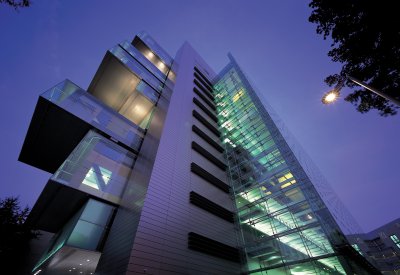articles/Inspiration/classic-page3
Updating a Classic - part 3 of 1 2 3 4
by Sean Conboy Published 01/01/2014

Tackling the shoot
Generally speaking, Sean finds himself dealing with two distinctly different types of clients, namely those who come to him direct, mainly architects and builders, and others, such as design and ad agencies, who will normally liaise through an art director.
"Clients who book me direct have usually looked at my folio, have liked the style that they've seen and just let me loose on the project," says Sean. "Working with an art director will be more structured, and I'll be part of a team and will need to work to a tighter brief. In most cases we'll have preliminary meetings and the art director will be there on the shoot. I enjoy this as you get the chance to bounce ideas off one another while shooting, because on location certain things, such as lighting, tend to change a lot.
"I always like to visit a location prior to a shoot to check it out, but sometimes this is not possible since it might be overseas or the other end of the country, or access might be limited. If this is the case I then try to find out as much about the location in advance as possible, such as what type of lighting I'm likely to encounter and how it can be controlled. I'm known amongst my clients for my ability to handle difficult situations, and being able to use lighting to solve the problem rather than HDR or Photoshop trickery. The lighting route usually gives a more realistic and pleasing result, and can add more depth and drama which the clients like."
If light needs to be added to a scene then invariably it's flash, although occasionally tungsten can be used. Sean's flash units of choice are broncolour battery-powered packs, since this avoids the need to worry about trailing cables, which can be dangerous and difficult to hide in the final picture. "The broncolour batteries last for ages and I've never had one run out on me yet," says Sean. "I also like the reflectors that come with the kit, and will use silver beauty dishes and grids, and also make my own from silver foil or sheets of white paper. Everything is fired using Pocket Wizards, and this makes things less stressful because you know all your lights will fire even when they're spread out over a wide area, or behind walls. I work out my exposure using a Minolta flash meter 5 with a five degree spot attachment, and this gives me a good idea of how the light is being soaked up by the various surfaces it's hitting."
Please Note:
There is more than one page for this Article.
You are currently on page 3
- Updating a Classic page 1
- Updating a Classic page 2
- Updating a Classic page 3
- Updating a Classic page 4
1st Published 01/01/2014
last update 09/12/2022 14:52:29
More Inspiration Articles
There are 0 days to get ready for The Society of Photographers Convention and Trade Show at The Novotel London West, Hammersmith ...
which starts on Wednesday 15th January 2025





